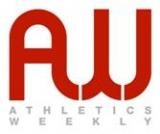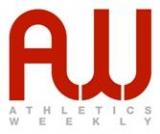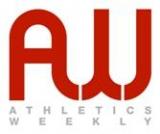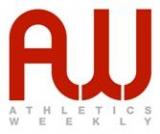Folders |
Streets ahead of its timePublished by
The modern trend of street athletics had its beginnings in a small Welsh Valleys town half a century ago, writes Clive WilliamsStreet athletics has grown greatly in popularity in recent years and the expansion looks set to continue, especially with Seb Coe, in his recently-released IAAF presidency manifesto, mentioning it as something he d like to see more of.
Baldwin, a school teacher from Mountain Ash in the valleys of South Wales, attracted all of the best British athletes of the day to his events, but it was the Nos Galan (New Year s Eve) road races in 1958 that were to be the platform for a myriad of events to be held on the streets. The format of Nos Galan has changed over the years, but the festival is still held in the former mining town and is now part of the Run Wales series. In recent times Nos Galan has been rescheduled to embrace family entertainment, finishing at around 9pm. The changed format means that the day now starts with an afternoon of street entertainment and fun runs for children. Just two events were held in that first year 56 years ago, a 100 yards on the main street of Mountain Ash followed by a midnight four miles race starting in one year and finishing in the next. The competitors in that first event read like a who s who of British athletics. Peter Radford, just a year before his Olympic bronze 100m medal in Rome, won the 100 yards, with British team-mates Dave Segal and local star Ron Jones second and third.
That first midnight race was won by Stan Eldon, then undoubtedly Britain s leading distance star, with fellow British international Frank Salvat second and Mick Price third. Wales John Merriman, winner of the silver medal over 6 miles in the Empire Games held earlier in the year in Cardiff, finished fifth. Incidentally, Radford and Segal were so taken by events in 1958 that they both started in the four miles, with Segal finishing 82nd. Bernard commented the following day that Radford was still out on the course somewhere! Only a man of Bernard s charisma (and persuasion) could have enticed two Olympic sprinters to run in a four miles race during the depths of winter. In short, Baldwin is a remarkable man. The idea for a race starting in one year and finishing in the next came from 1956 National crosscountry champion and TVH legend Ken Norris, who had won the iconic Sao Paulo midnight race in Brazil in 1956. Norris finished 10th in a field of more than 100 runners in that first Nos Galan. Baldwin and Norris developed a lifelong friendship after the pair first met at Merthyr AC s annual dinner, where Ken had been the guest speaker, and it was this first meeting that sowed the seeds of Nos Galan. A feature of the midnight race is the arrival of the mystery runner in Mountain Ash, who arrives from the graveside of the mythical Guto Nyth Bran in Llanwonno about four miles away. The first mystery runner was 1948 Olympic marathon silver medallist Tom Richards and he was followed in later years by many all-times greats of the sport, such as Derek Ibbotson, Lillian Board, Lynn Davies, Ann Packer, David Hemery, Dave Bedford, Steve Jones and Mary Rand.
The fact that these greats of British athletics should travel to the valleys of South Wales for an event invariably staged in bitterly cold weather at midnight clearly underlined the esteem in which Baldwin was held. This is particularly the case with the late golden girl of British athletics Lillian Board and Olympic champion and world record-holder Mary Rand. Who could imagine today that two female track athletes, winners of Olympic and European titles, more used to running in events no further than 400m would brave the elements at midnight in a South Wales mining town to run four miles carrying aloft a very heavy lighted torch. Only Baldwin could make that happen. A mile event in nearby Penrhiwceiber was added in 1959 and was won by former world record-holder Derek Ibbotson. But the undoubted star of the event was the European indoor 1500m champion and double Olympic finalist John Whetton, who won for seven successive years between 1962 and 1968. Other events were added in subsequent years and the Lincoln twins, Rita and Iris, both British international athletes, won the women s mile on several occasions. The marathon star Joyce Smith also won in a record time in 1965. Former British sprint relay world record-holder Ron Jones, born only a mile or so from Mountain Ash, was always a supporter of Baldwin s events. Jones said: I have great admiration for Bernard he brought athletics to people who would not normally watch our sport.” However, tragedy struck in the 1967-68 event. Baldwin, forever the showman, who was travelling in the rear of his car leading the mystery runner down to Mountain Ash from Llanwonno, attempted to set-off fireworks to signal the arrival of the mystery runner. Just imagine that happening today. But to Baldwin it was a logical thing to do. Unfortunately, a stray spark landed in the box containing the fireworks and the car burst into flames and burned out. Baldwin suffered multiple burns and was out of action for a long time with his right-hand man Tom Lewis also suffering. But such was his organising ability, Nos Galan continued until he was able to fully take over the reins again when he recovered. Almost every year there appeared to be some crisis in Nos Galan affairs the foot and mouth disease threatened the end in 1967; there was a threat by striking miners to keep runners out of Deep Dyffryn Colliery baths where the runners changed; insufficient homes for runners to stay (600 was sometimes insufficient) and when a white South African team entered, the Anti-Apartheid Movement threatened to bring the proceedings to a standstill with a demonstration in the main street. All these crises were probably fuelled by the well-meaning publicity-conscious Baldwin, but the organisation survived these and many other problems and with tremendous support and encouragement from the police succeeded in making Nos Galan a truly international event. By the time that eventual world 10,000m record-holder Bedford won the four miles race in 1969 it was safe to say that every runner of note in Britain, as well as stars from abroad, were taking part.
Nos Galan was Bernard Baldwin. He conceived it and ran it, it was his. Nowadays, advancing years have meant that he has handed over the baton to others and he now regales in the title of honorary patron. However, Bernard didn t restrict his energies to Nos Galan and their associated events. He went on to be the leading light in Welsh athletics becoming secretary of the then athletics governing body in Wales and a British team manager. He has written or compiled numerous publications on Welsh athletics, and was Welsh correspondent to AW for 22 years. For many years he was a prolific contributor on Welsh athletics to the Western Mail, South Wales Echo, South Wales Argus and Sunday Express and a regular broadcaster on BBC Wales. As well as these activities, he also found time to undertake the public address duties at numerous athletics meetings in Wales and type and run off on his ancient machine the first Welsh best-performer lists I produced with Ken Bennett in 1963. Among the numerous other events he organised all Nos Galan spinoffs were similar road meetings throughout the South Wales valleys, including Wattstown (commenced in 1961), the popular Easter Monday meeting at Pencoed (1963) and the Taff Street dash along what was reputed to be at the time Wales busiest road in Pontypridd on the evening of the Welsh Championships. Sadly, these events are no longer with us. Recalling the Taff Street Dash, J.J. Williams, winner of four Welsh sprint titles and a Welsh rugby icon who won as a schoolboy in 1965 and also in 1971 said: The atmosphere created was tremendous and all of the leading sprinters at the time wanted to take part.” But, he added: If you got drawn in one of the outside lanes, you were in the gutter, and didn t stand a chance of winning!” Peter Radford won the first Taff Street dash over 250 yards in 1959 from Segal and Wynne Oliver. The after-race function at the New Inn Hotel also in Taff St, which also served as the annual dinner of the Road Runners Club of Wales, was Baldwin s real showpiece, where his unique show business-style talent entertained the guests until the early hours with his anecdotes and comments on virtually every person in the room up to 300 of them! As I wrote in The History of Welsh Athletics in 2001, Baldwin was a man ahead of his time. To a certain extent some of the locals did not appreciate the quality of the athletes being paraded before them. Imagine a small terraced street in Wattstown, in the Rhondda Valley, with the Olympic 100m bronze medallist, and two other world record-holders about to run in a 100 yards event in the middle of the road.
I remember a local miner popping his head around the front door of his terraced house and asking Baldwin, as ever with megaphone in hand, What the hell is going on here today then?” To be told that Radford, Ron and Berwyn Jones and several other of Britain s top athletes were running in a 100 yards race just outside his front door completely bemused him. To him it was equivalent to a modernday prank by one of today s TV shows. He muttered something unprintable and promptly closed the door and went in! One of Bernard s most popular events among distance runners was the Cardiff to Mountain Ash two-man relay. Almost unbelievably for today s athletes, two runners shared a car, hopping in and out of the vehicle. The first event in 1964 was won by Gilwern Harriers (Adrian Aylett and Tom Edmunds). The record for the race was the 1:20:47 recorded by Tony Simmons and Tony Cox of Luton despite torrential rain in 1968. Unfortunately, this unique event is no longer with us as it fell foul of the many traffic restrictions which were coming into force. His Road Runners Club (Wales) committee also organised a Cardiff to Swansea two-man relay over 51 miles. This survived for just three years between 1963 and 1965 and was the forerunner of the shorter Cardiff to Mountain Ash event. Welsh athletics stalwart and former Welsh CCA secretary John Collins was in the winning team each year. Collins recalls that one team used a hatchback for convenience while another used a van with the back doors removed! Another event he organised was the 40 miles track race at Cardiff s Maindy Stadium, where world best performances were set in two of the races by the late John Tarrant in 1966 and Lynn Hughes the following year. Alan Phillips, who was to set world best performance times for both 40 and 50 miles in Walton in 1966, took the 50 miles race in 1968. The Nos Galan organisation ventured over the border to Bristol in 1973 when they promoted a 20 miles track race on the new track at Whitchurch, which saw the future 1974 Rome European marathon fourth-placer Bernie Plain set a UK allcomers best of 1:40:34.6. Baldwin has just passed his 89th birthday but is not in good health and was recently awarded the Freedom of the County Borough of Rhondda Cynon Taf in a ceremony attended by, among others, Bedford, Olympic fourth-placer and European 10,000m silver medallist Tony Simmons and Plain, all of whom figured prominently in his events over the years. Bernard was a good athlete himself in his younger days, winning the Welsh junior mile title in 1943 to emulate his brother Bramwell who won in 1937. He also gained a senior Welsh cross country vest running in the International Cross Country Championships (the forerunner of the IAAF World Cross Country Championships) in Paris in 1947. He was awarded the MBE for his services to athletics in 1971. I don t think that we will ever see a man of his energy and vision again. Top featured image - Eddie Strong wins the four miles race at Nos Galan in 1961 This feature was first published in the December 11, 2014, edition of AW magazine with that piece including many more images of street athletics events The post Streets ahead of its time appeared first on Athletics Weekly. Read the full article at: www.athleticsweekly.com
|







 Yet you would be wrong in thinking that it all started on the streets of Manchester or Birmingham in recent years. In fact, street” athletics was started more than 50 years ago by a man who was light years ahead of his contemporaries Bernard Baldwin. And he did it virtually on his own, supported by a local committee of volunteers there were no event-management companies then!
Yet you would be wrong in thinking that it all started on the streets of Manchester or Birmingham in recent years. In fact, street” athletics was started more than 50 years ago by a man who was light years ahead of his contemporaries Bernard Baldwin. And he did it virtually on his own, supported by a local committee of volunteers there were no event-management companies then!